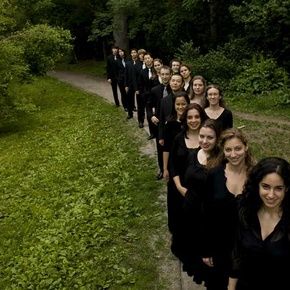Amherst Chamber Series Off to Promising Start

On Sunday, September 14, I had the pleasure of attending a chamber performance in Buckley by A Far Cry. At Sunday’s performance, the 19-member, Boston-based chamber orchestra was accompanied by solo violinist Augustin Hadelich. A Far Cry is especially worthy of attention as the group is self-conducted and elects no permanent leader, instead choosing to take turns designing programs. The program performed on this occasion was entitled “Return to Idyll” and was conceived by violinist Annie Rabbat. The program featured three pieces: Thomas Adès’s “Arcadiana,” Dmitri Shostakovich’s “Sonata for Violin and Piano” and Leoš Janáček’s “Idyll.”
The first piece, “Arcadiana,” opened the program with a somber tone. The piece quickly gained greater personality contrasting consonance and dissonance to create and release tension. Right away, the skill and passion of the individuals in the orchestra was apparent. The musicians’ faces showed their emotions as the music visibly affected them. One particular moment truly showed this when, for a time, only a quartet played, each individual contrasting their parts as if in a violent competition. Then, the orchestra returned to performing in unison. A number of moments throughout “Arcadiana,” notably a masterful call-and-answer section from two violinists kept listeners captivated throughout. The piece ended quietly but in no way serenely, leaving the audience in a sullen mood.
The second piece was without a doubt the highlight of the performance. “Sonata for Violin and Piano” featured soloist Augustin Hadelich, who is currently working with A Far Cry, though not actually a permanent member. The first movement was a testament to how well the group played together. It was tight and smooth — a magnificent display of musicians coming together to perform.
The second movement was where the true virtuosity of Hadelich shone. His technical ability managed to stand out even amongst the powerful players of A Far Cry that surrounded him. It was profoundly beautiful to hear and watch the way in which he led the group through the piece. This was not an example of a soloist playing over a group providing background noise, but of masterful listening and the ability to lead the piece so that all of the players were heard at a higher quality. The tonal quality coming from the entire group was so powerful. Specifically, I must recognize percussionist George Nickson. Watching him throughout this movement was inspiring, though somewhat comedic. At one point, I watched as he stood on one leg, silencing the gong behind him with the other while using his hands to quickly switch between mallets and a bass drum. As I watched him at work, I witnessed him perfectly highlighting the group’s melodic and harmonic lines. His masterful management of four instruments was astounding. The third and final movement of the Shostakovich was much less aggressive than the previous movement. For that reason, it was all the more impressive. The difficulty involved in performing slower music is rarely recognized. Each individual musician is exposed and if a note is incorrect or out of tune, it is heard by the audience. The greatest difference between music and other entertainment forms, such as sports, is that the musician aims for and expects perfection. No one anticipates an athlete to perform without a number of mistakes during every game, but for a musician, a single mistake can be fatal to a performance.
The third movement of this piece embraced these dangers and did not merely manage them, but excelled in spite of them. With contrasting dynamics, gorgeous tone from Hadelich and tight-knit playing from the group, the second piece from the program left the audience in awe.
The third and final part of the program was entitled “Idyll” and lends itself to the name of the program, “Return to Idyll.” This piece was of a much lighter tone than the previous ones and created a serene atmosphere in Buckley. The piece brought the program together as it contrasted the previous dark, moody and haunting performances with something happy. Hadelich brought the audience to the edge of their seats with the first two sections of the program, but now they could sit back, relax and watch masters bring music to life. From turmoil to a soothing landscape, A Far Cry truly returned us to idyll.
A Far Cry took music and elevated it to true art, expressing emotion via body language and astounding quality of sound. I was able to speak with some of the Criers (how the orchestra refers to its members) after the show and to hear their excitement for performing their own arrangements. It made me smile to see a group working to bring life to old music. Hosting A Far Cry at Amherst was a wonderful opportunity and left me excited to hear the other groups that will perform on campus throughout the year.





Comments ()